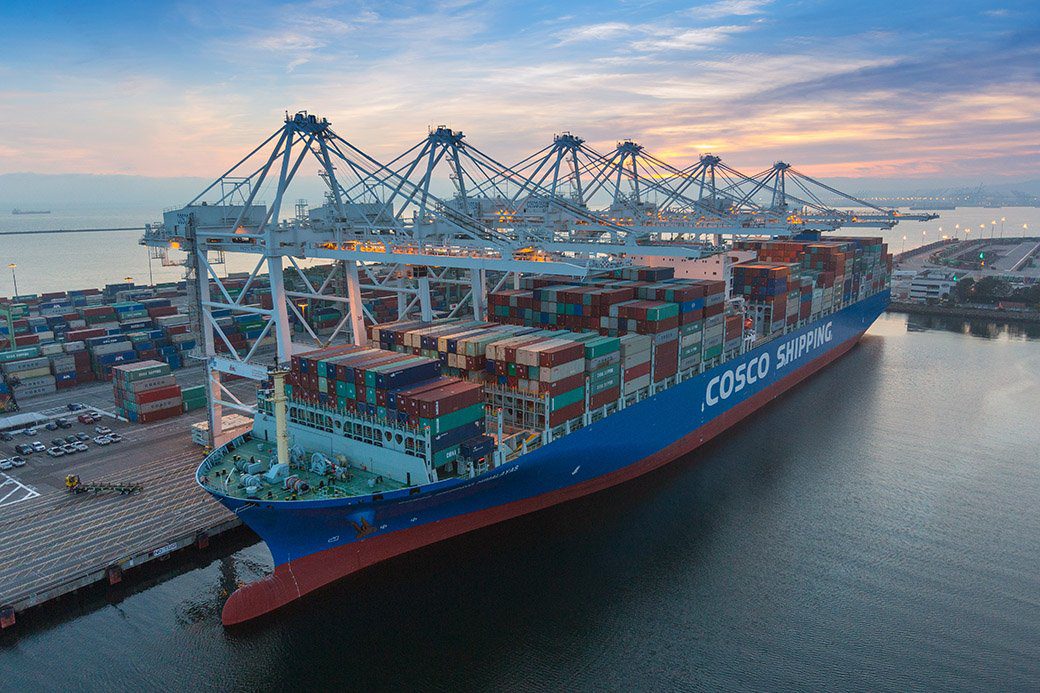Port of Rotterdam’s Throughput Falls Amid Global Tensions
Europe’s busiest port, the Port of Rotterdam, saw a decline of 1.4% in its total throughput in the first quarter of 2024 compared to last year. In total, the port...


Photo credit: Port of Long Beach
![]()
![]()
LOS ANGELES, July 11 (Reuters) – The Los Angeles and Long Beach port complex, the nation’s busiest and the No. 1 for ocean trade with China, – handled 5.1%fewer inbound containers of cargo in June, as the trade standoff between Washington and Beijing disrupts global supply chains.
Imports to the smaller Port of Long Beach dropped 13.7% from June 2018, more than offsetting the 3.5% gain at the Port of Los Angeles, which processed 396,306.5 20-foot equivalent units, a standardized maritime measurement for counting cargo containers.
June was the second month of import declines at the sprawling facility, which is in the midst of what is typically the peak season for inbound shipments of goods earmarked for winter holiday sales.
Logistics companies ranging from ocean shippers to parcel delivery companies are bellwethers for the global economy. Many have warned that the global economy is cooling, due in part to trade tensions between the United States and China.
May’s decline was largely due to China’s Cosco Shipping’s cutting volume at the Port of Long Beach, S&P Global Market Intelligence’s trade data firm Panjiva said in a recent report. A spokesman for the Long Beach Port on Thursday said the facility saw similar shifts by cargo ships in June.
U.S. seaports booked record imports in 2018 after retailers rushed to bring in a swath of Chinese goods – including furniture, appliances and auto parts – before they were subject to new tariffs. Retailers stuffed warehouses to the rafters and are still working through that inventory.
The Trump administration escalated the trade conflict this May, announcing a tariff hike on $200 billion of Chinese products. China retaliated with tariffs on $60 billion of U.S. goods.
The United States has paused plans to hit China with tariffs on an additional $300 billion of goods while the two countries seek a trade deal.
“Retailers still want to protect their customers against potential price increases that would come with any additional tariffs, but with the latest proposed tariffs on hold for now and warehouses bulging, there’s only so much they can do,” said Jonathan Gold, the National Retail Federation’s vice president for supply chain and customs policy.
U.S. exports, which have been hard hit by China’s retaliatory tariffs, fell 3.4% year-on-year in June, the two ports said.
(Reporting by Lisa Baertlein in Los Angeles Editing by Leslie Adler)
(c) Copyright Thomson Reuters 2019.
Join the gCaptain Club for curated content, insider opinions, and vibrant community discussions.


Join the 105,960 members that receive our newsletter.
Have a news tip? Let us know.
Access exclusive insights, engage in vibrant discussions, and gain perspectives from our CEO.
Sign Up




Maritime and offshore news trusted by our 105,960 members delivered daily straight to your inbox.



Essential news coupled with the finest maritime content sourced from across the globe.
Sign Up